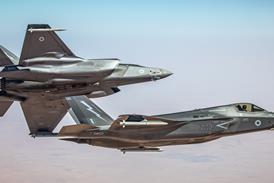Raytheon says its Advanced Tactical Targeting Technology (AT3) programme, designed to allow precision attack of surface-to-air missile systems, could "revolutionise" the lethal suppression of enemy air defences (SEAD).
Under the company's 22-month, $8.7 million, second-phase contract, AT3 flight testing is planned for 2002. Raytheon hopes the demonstration will lead to a development programme and fielding of AT3 within seven years.
"We know that the concept works. We've done enough work to know it is valid. We now need to establish how precise it can be, and determine all the risks associated with putting it on operational aircraft," says Mick Elam, AT3 programme manager.
The Defense Advanced Research Projects Agency (DARPA) and the US Air Force have set tough goals for AT3 - a range of up to 280km (150nm) and accuracy of 50m (164ft), with target acquisition to be accomplished within 10s of a threat radar being initiated.
Under the concept, three aircraft equipped with sensors and connected by datalink would use time difference of arrival techniques to locate an emitter precisely. AT3 would make any tactical aircraft carrying GPS-guided munitions capable of SEAD.
Manned and unmanned air vehicles could be used. One would act as the "roving master", using data from the two "slaves" to provide target coordinates to a GPS-guided weapon launched by one of the three aircraft.
Source: Flight International




















